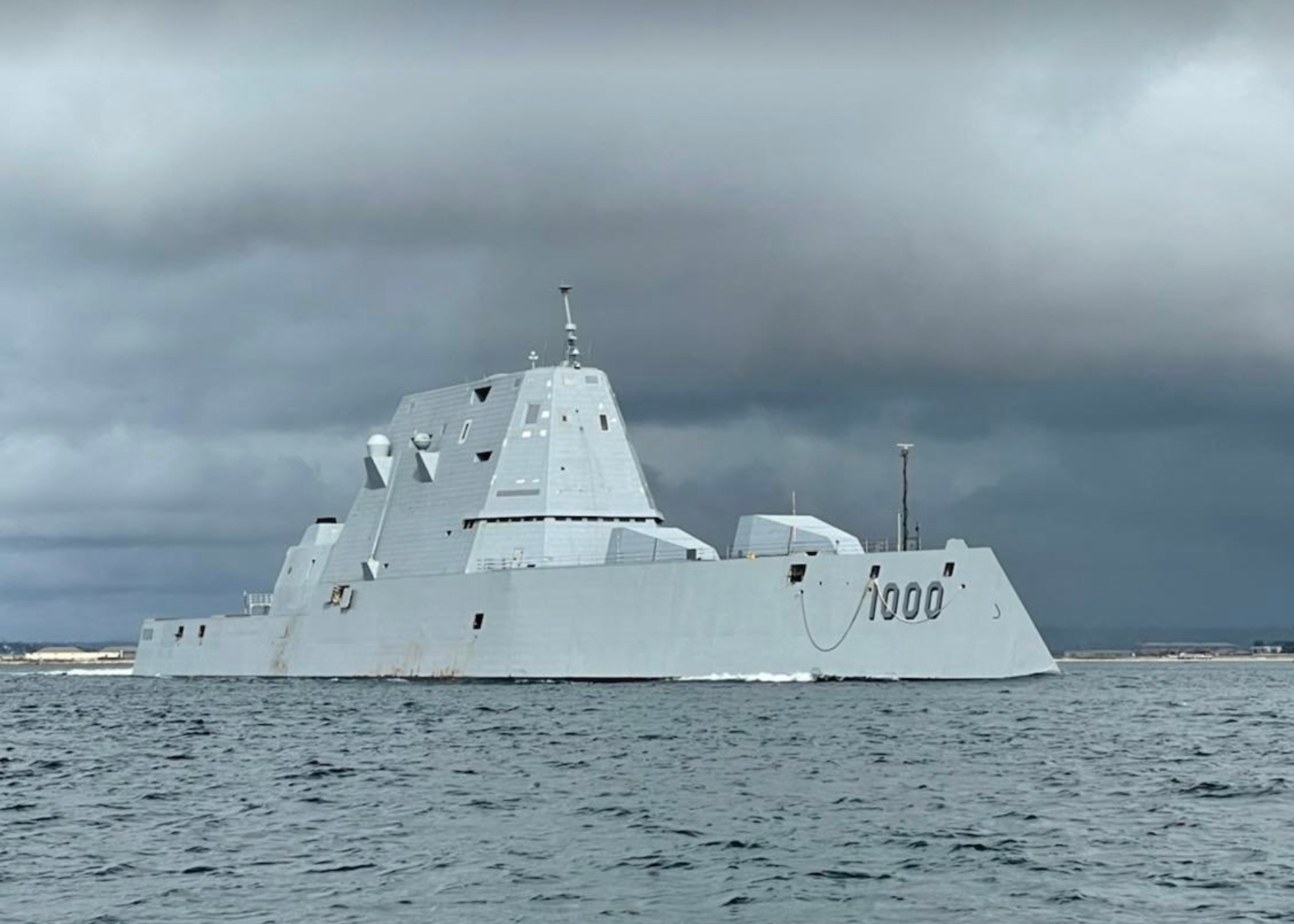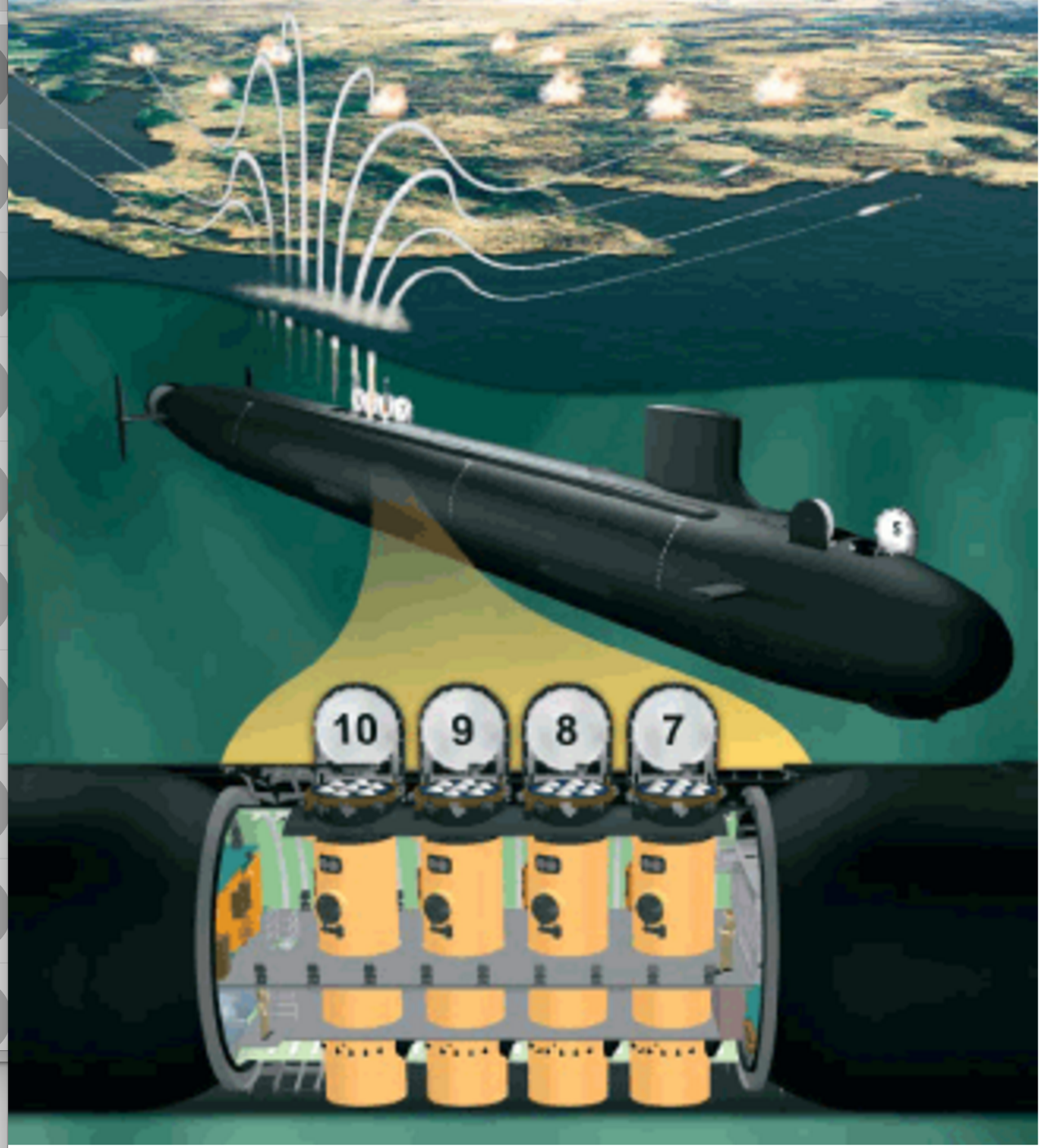
The most recent plan for adding hypersonic weapons to the Zumwalt-class guided-missile will involve removing the two massive 155 mm Advanced Gun Systems aboard the trio of destroyers, the Zumwalt program manager told USNI News on Wednesday.
In October of next year, USS Zumwalt (DDG-1000) is expected to enter a maintenance availability that will include the removal of the two AGS from the 16,000-ton destroyer and the support systems for the guns and ammunition the destroyers were built around.
“We are removing the guns, the upper and lower gun rooms. That includes the loading system, the transfer carts, the ammo, etc.,” Capt. Matthew Schroeder, DDG 1000 program manager, Program Executive (PEO) Ships told USNI News in a Wednesday interview. “[We’re] going down about five platforms to accommodate the height of the missile, which is significantly larger than other missiles in the inventory.”
When the availability is complete in 2025, Zumwalt will be armed with the Common Hypersonic Glide Body (C-HGB) — developed for the Army, Air Force and the Navy – according to the Navy’s plan. The conventional prompt strike (CPS) concept extends a long-range strike capability for the U.S.
Last month, Chief of Naval Operations Adm. Mike Gilday outlined to USNI News an older version of the hypersonic missile installation plan that included leaving the AGS in place. That has been superseded by the newer plan, USNI News has learned.
Replacing the two mounts with the tubes that will hold the hypersonic weapons will leave the ship’s margin for growth about the same as if the guns had stayed aboard, Schroeder said
“There are small changes in the overall stability of the platform, but it’s essentially neutral. The weight of the AGS mounts and the distribution of that weight is very similar to what we’re going to experience with [conventional prompt strike] in the future,” he said.

AGS was developed in concert with the special rocket-assisted Long Range Land Attack Projectiles that would provide forces ashore naval surface fire support at a range of more than 60 miles. Both systems tested well, but when the Navy cut the program from 28 ships to three, the service lost the savings from buying the rounds in bulk.
Zumwalt is set to be the first ship to receive the missile tubes — a variant of the Multiple All-up Round Canisters (MAC) system developed when the Navy converted four Ohio-class nuclear ballistic missile submarines into guided-missile boats. The MAC tubes put seven Tomahawk Land Attack Missiles (TLAM) in the same space as a Trident-II D5 nuclear ballistic missile. The Navy will put three of the larger C-HGBs in the same space, USNI News understands.
Schroeder would not tell USNI News how many tubes would be installed on Zumwalt when asked.
However, the Navy intends to put four tubes aboard the Virginia-class Block V nuclear attack boats in the 84-foot Virginia Payload Module extension. With the removal of AGS, the Navy could put at least three tubes aboard the destroyer.
The next two Zumwalts, USS Michael Monsoor (DDG-1001) and Lyndon B. Johnson (DDG-1002) will also have the AGS removed.

“We have plans to do it on all three platforms during their original docking selected restricted availabilities, which are scheduled over the next several years,” Schroeder said.
He said that Johnson, currently undergoing a combat system activation at Ingalls Shipbuilding in Pascagoula, Miss., will not have its AGS removed as part of the period at the yard.
“The focus of the combat system availability down in Huntington Ingalls is to install the program-record baseline combat system for the ship, cruise the ship, train the crew, how to operate the systems, and then and then put it out in the fleet for a couple of years of employment,” Schroeder said.





